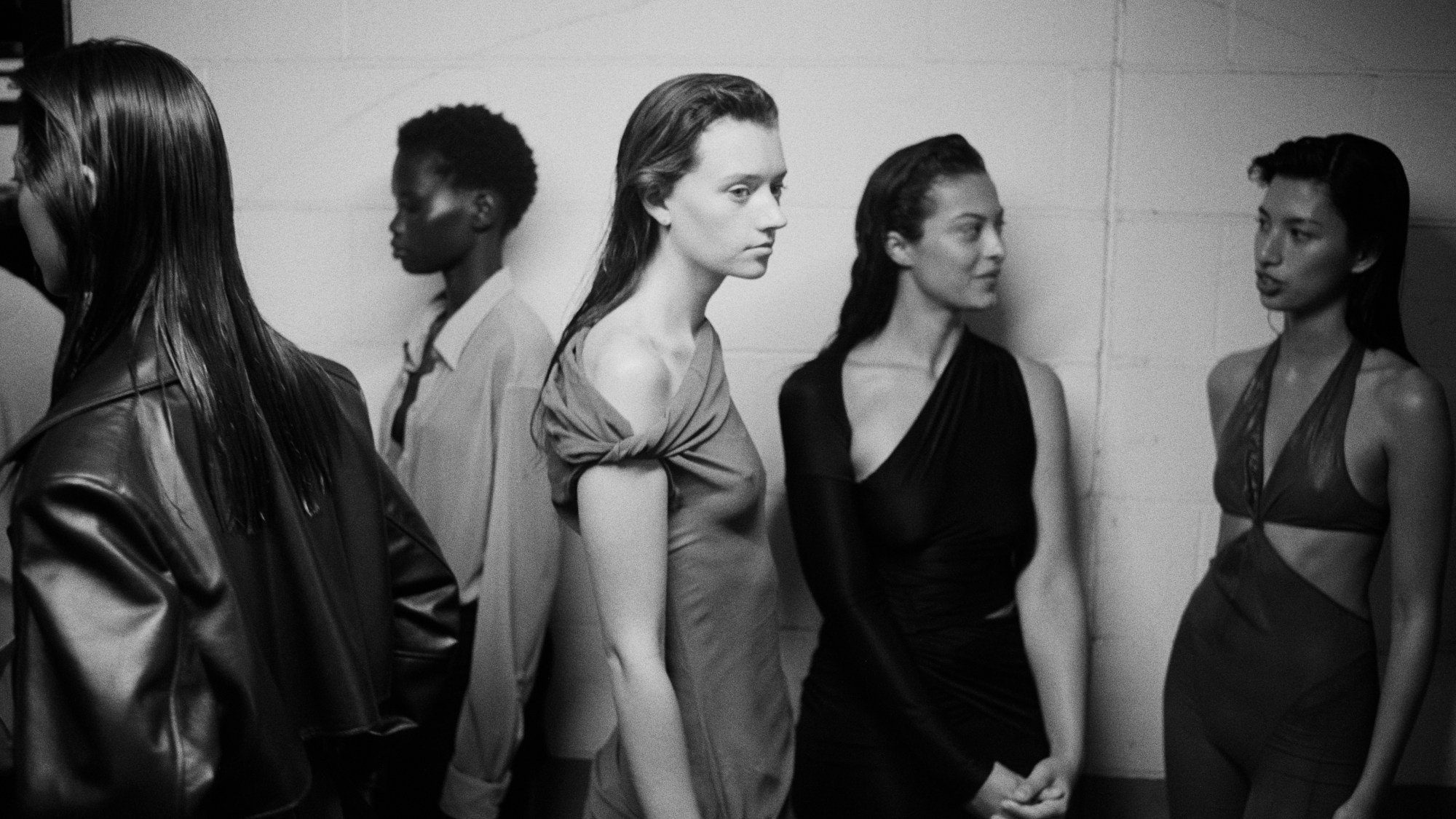This story originally appeared in i-D’s The New Wave Issue, no. 373, Fall/Winter 2023. Order your copy here.
While at a dinner party, designer Supriya Lele and curator Donald Ryan got talking and the two instantly clicked. One thing led to another and, a few years later, the pair opened Qrystal Partners, an art gallery housed in an old pharmacy in Southwark* which, at the moment, is playing host to some of the biggest names in art past and present, including Peter Doig, Edward Burra and Deana Lawson. But this isn’t just another young gallery amongst the crop of spaces that have popped up all over London in the past few years: it’s the fruits of a burgeoning collaboration between Supriya and Donald, now executed with the help of Parinaz Mogadassi, whose gallery TRAMPS — with their London location just a stone’s throw from Old Street station — is, for those in the know, one of the most pioneering places to experience contemporary art.
“There’s an energy that Supriya, Donald and I possess: we’re not afraid to fuck with things. I think that’s exciting.” Parinaz Mogadassi
This October, the three installed an exhibition across both Qrystal and TRAMPS called Man of the Crowd, referencing Edgar Allan Poe’s short story of the same name. In it, Poe’s character follows an alluring man around the city, which, as Parinaz explains, is something she used to do when growing up in 90s New York. “I’d see someone on the street and wonder: ‘Who are they? Where are they going? What are they up to?’ So I’d just quietly follow them,” she confesses. “You end up in a record store, or a little Ukrainian place to have a cup of borscht — it was a great way to get to know the city.” Man of the Crowd echoes that experience but, rather than following strangers, it looks to painters and photographers whose work represents a particular experience of metropolitan life: that feeling of alienation that can only be experienced when rubbing up against a throng of people in the urban space. These artists use a city’s people and architecture to tell a story in one image that evokes the experience of watching time unfold, tracing this approach as a common thread through the history of painting, photography and cinematography. Now, through showing one exhibition across two galleries on opposite sides of the city, their curatorial vision extends into the viewer’s own experience, forcing them to jump on the number 21 bus for 30 minutes to see the whole show.
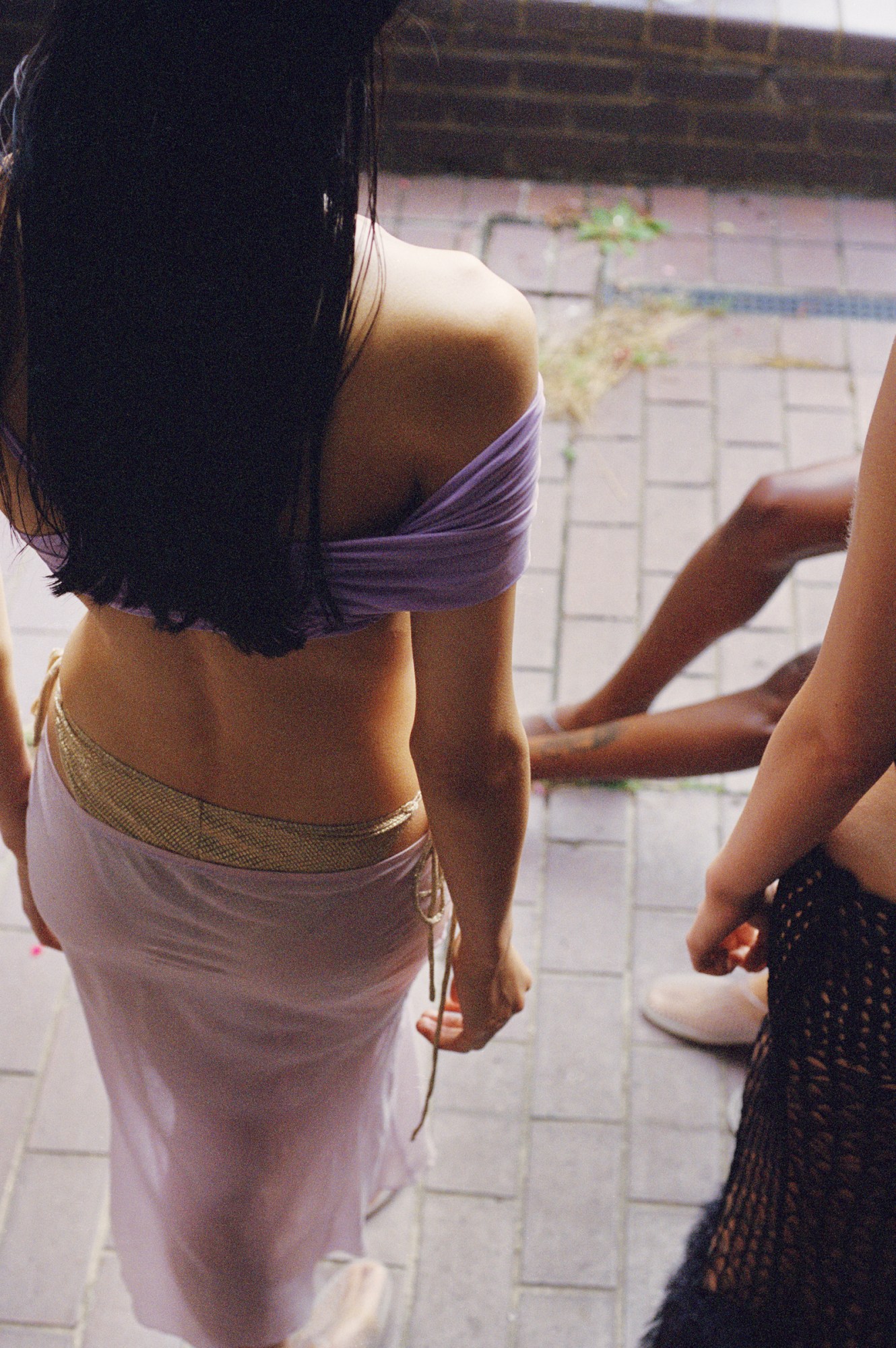
The collaboration doesn’t end there, though. When Supriya returned to London Fashion Week for SS24, Donald and Parinaz were right there with her, conceiving the show as an extension of the exhibition. The trio now work together across Supriya Lele, Qrystal Partners and TRAMPS, assisting each other with their respective projects where they can. The art of collaboration is a hard one to perfect, and the best kind grows from the deep respect that can often be found in the bonds of friendship between like-minded individuals — such as this one between Supriya, Donald and Parinaz. Here, the trio discuss London, their approach to collaboration and how and why they are bridging the gap between fashion and art.
Donald Ryan: The thing that I wanted to start off with is the way that we’ve been working together. It’s very collaborative, but there’s still a lot of autonomy and independence that’s being held as well. TRAMPS is still very much TRAMPS and that’s Parinaz; Supriya Lele is still Supriya’s business and she’s the designer; and then Qrystal is also separate. I think the way that we’ve been working has been super collaborative and very intimate, but at the same time is very respectful of our autonomy in each of our own projects and practices and ideas. That’s the interesting place to start: how people can work really closely together while maintaining their autonomy and independence. I don’t think any of us really feel like we need to have ownership over anything else that the other person is doing, as long as the contributions are being welcomed and acknowledged. It doesn’t need to be packaged into some brand.
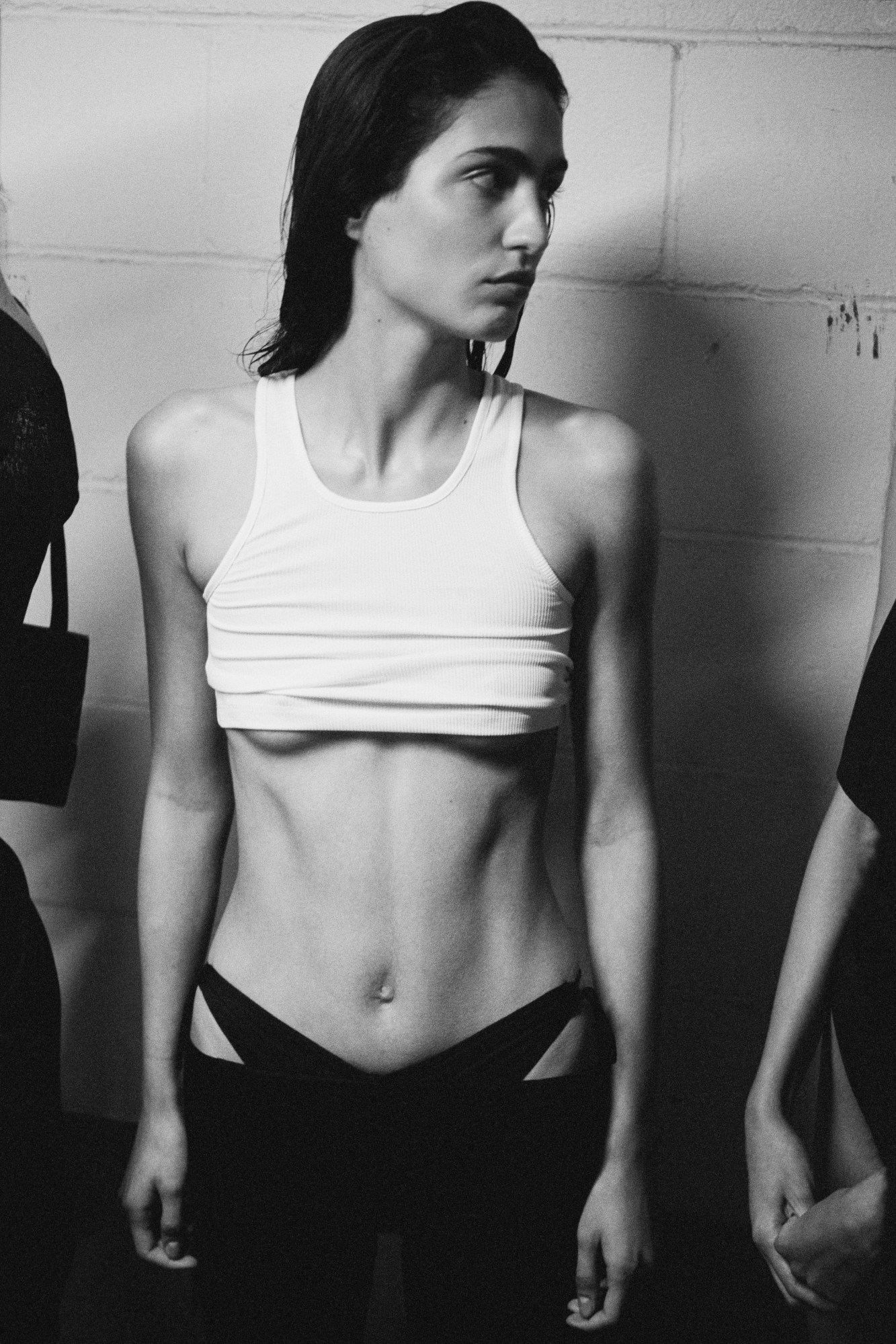
Parinaz Mogadassi: Both Donny and I came from working in galleries and working within structures where there was a clearly defined hierarchy. Whenever we wanted to do something, we weren’t able to retain ownership of those ideas because of this subservient model that had been established. It just didn’t make sense — it didn’t feel like a productive or honest way of working. So we branched out, we left the galleries that we worked for, and we didn’t necessarily want to become gallerists ourselves but we were still very much interested in working with artists and mounting exhibitions, in having that conversation with the public, and continuing the dialogue with artists that we cared about and established relationships with. We have approached it without having any particular model in mind, working in a purely intuitive way. And being respectful of each other’s ideas, of course, and realising that I can still have TRAMPS and my ethos in the way that I do things. And that’s not in conflict with Qrystal, because Qrystal is Qrystal and Supriya [Lele] is Supriya.
Maybe we can talk a bit about how the collaboration with Supriya started… Donald and Supriya are good friends, and he was telling me about her work. I met her at an opening for one of my artists and I really, really liked her. She was at this interesting moment where she was contemplating showing again, and I was looking at her clothes, the sophistication required to make something seem so effortless, and I felt like I really understood and appreciated where she was coming from. We met in her studio and I looked at her mood board — it was extremely exciting because we were so much on the same page that this fantastic dialogue ensued. For me it was interesting because I’ve got TRAMPS which is, in a way, a gallery—but I’m always hesitant to call it a gallery because I feel like when you call something a gallery, you’re limited to physical space and what can be done in that space. It’s just so concrete. Whereas, without sounding pretentious, I feel like it should just be a lot more malleable and open-ended. And this collaboration with Supriya became an exercise in that type of idea.
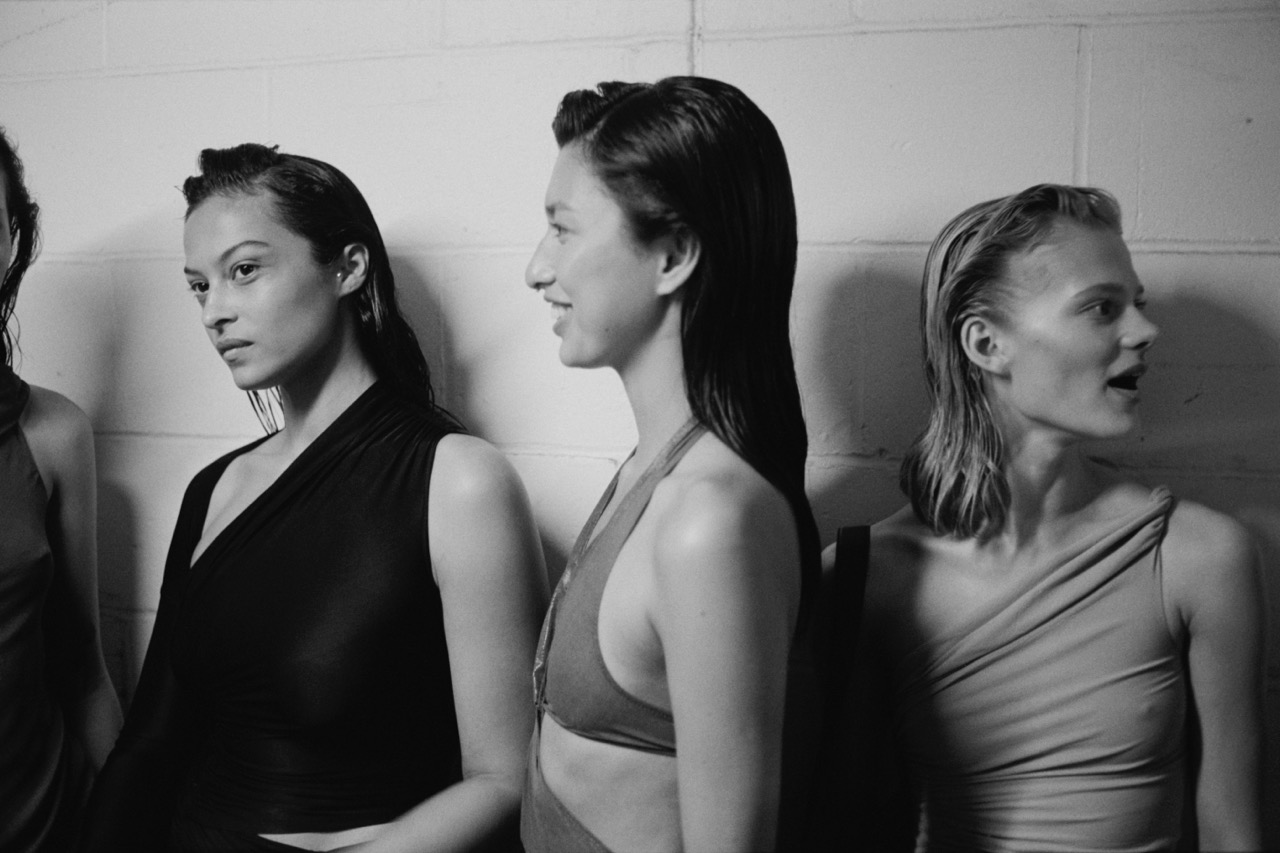
Supriya Lele: For me, working with Parinaz and Donald feels like a very pure way of working. When brands are trying to work with artists, they’re often doing it to get into the art world. It’s very commerce-driven, very much about shifting goods and trying to position a brand, and that’s just not the way that I’ve ever seen this. It has been a very pure and organic process, and one that has started from a very honest place.
Donald: Over the past year or two, the three of us have all felt a bit of frustration as to where we were with what we were doing. This collaboration has really come about through conversations we were having with each other about how to resolve this. When I left blue chip galleries, Parinaz and I began having conversations about how we could work with artists today. We want to work with artists to create exhibitions and projects that are less concerned with maintaining ideas of ‘good taste’. Instead, we would like to focus on the actual content and context. Soon we were working closely together with Peter Doig on developing his exhibition at the Museé d’Orsay in Paris. Around the same time, I was having conversations with Supriya about how we could collaborate. I had met an artist on a trip to Manchester a year or so before named Jai Chuhan, and I saw a lot of overlap in both Jai and Supriya’s interests and thought that they would enjoy meeting. The meeting was a success and so we decided to try and stage a small show together. We thought we would just try and rent a small studio in her studio building, but ended up finding the pharmacy — and Qrystal Partners was born. Supriya is very involved in the running of the space, and even took out the lease in her business’ name — but gives me total independence in curating and organisation, which I have found to be a very, very generous act.
Because Supriya was so generous with her encouragement of my curatorial practice, I really wanted to find a way to give back to her. So, I began brainstorming with Parinaz. Parinaz has a background in working in fashion and proposed that we should start working with her as we would an artist: that we give her creative feedback, help her with production and provide her with some support.
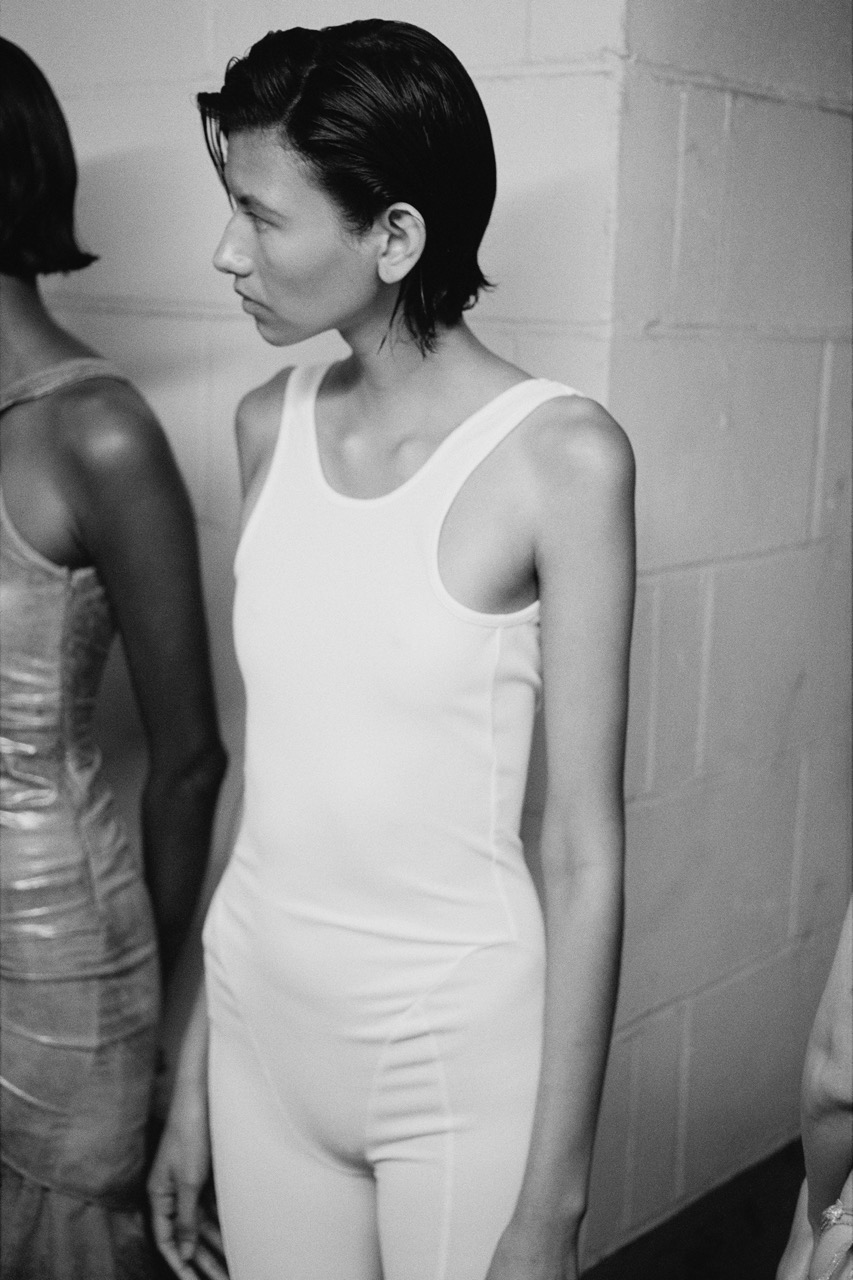
Parinaz: It’s like a think tank: we each have our strengths and we look at each project — whether it be an exhibition or fashion show — as something that needs to be realised, and contribute ideas as to how we think we can best realise it. Supriya’s show was an interesting exercise because it was all done on a shoestring. I think we managed to distil the essence of Supriya within this fantastic setting that was lo-fi in an appropriate way, but celebrated the best of the best of urbanity in a moment where there’s not much to celebrate in London, in post-Brexit UK. It’s trying to make sense of that, and that goes back to the show as well. The exhibition across both galleries is trying to make sense of being in urban spaces, and that sense of alienation, but also not wanting to completely relinquish the feeling of optimism that drew us to the city in the first place. The feeling of potential.
Supriya: I get asked a lot by the press what London means to me as a designer; what is London and its “community”? This, to me, really does feel like a community exercise. We did the show in the Barbican car park — there’s this gritty realisation within a very specific environment that holds a lot of social meaning and context. I think that, with the exhibition between Qrystal and TRAMPS, you’ve got an ongoing dialogue. To me, that’s a community way of thinking, right? It’s building something broader.
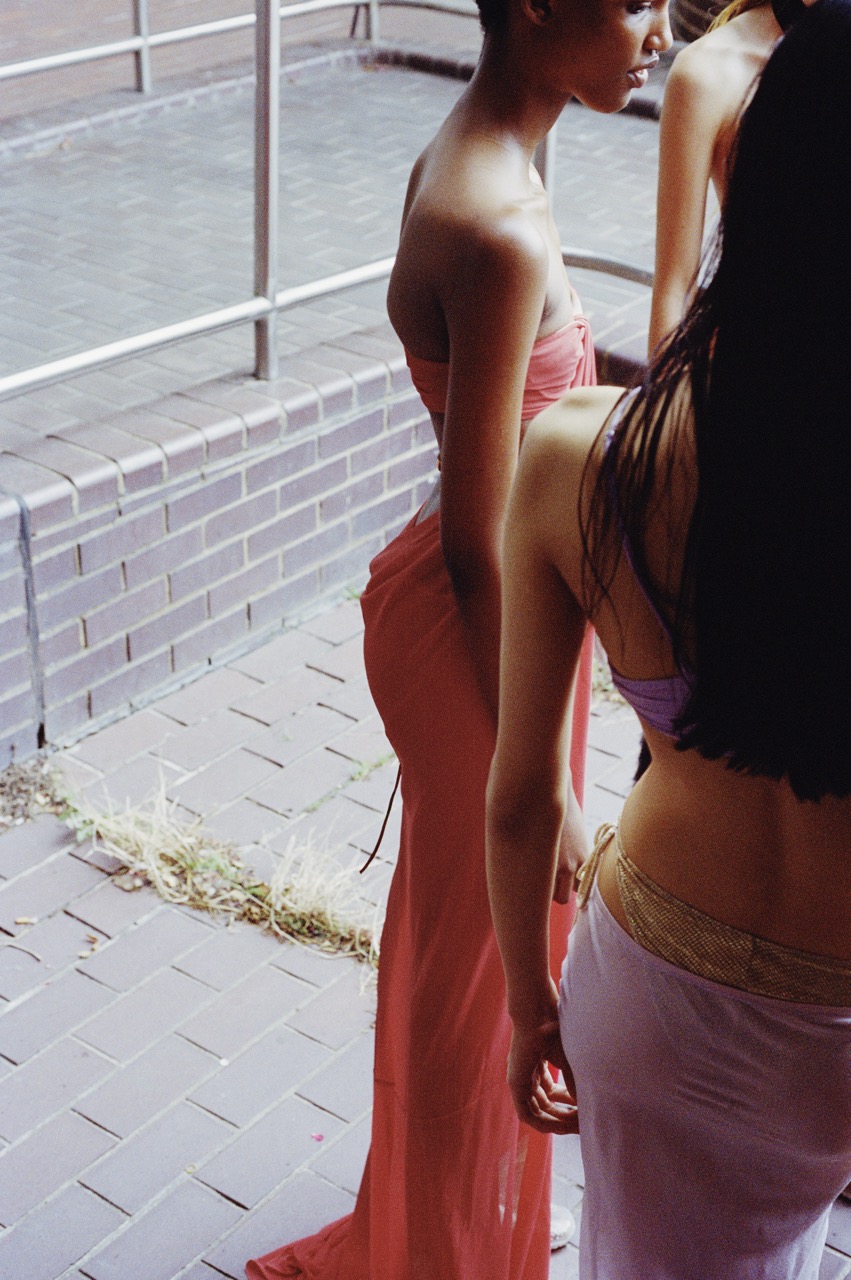
Donald: I moved to London about three years ago — I’m American, and I’ve lived in New York most of my adult life. I don’t know if I would have had the confidence to strike out on my own in New York. I think that, in London, there are still opportunities to find spaces that don’t cost a lot of money. If you’re creative enough, or daring enough, you can find something.
Parinaz: I find it alienating how vast London is, but I think it’s a good place to retreat to: it gives you a lot of space. It’s not like New York, which is one distraction after another and just pulls you into this mental energy. I feel like it’s a very productive place to be. I see what you see, Donny, I think there’s so much potential here. But in terms of support, I look at Supriya’s brand, and where’s the support? I mean, yes, she gets press, but why is she not being celebrated more? I mean, I think there’s all these really uninteresting men in fashion designing for women, and the clothes don’t speak to me, or anyone that I know, and they’re lauded by the establishment. I’m really bored of that, and I think something’s got to shift. To me, when you’ve got a talent like Supriya, it’s a no-brainer. There’s an energy that Supriya, Donald and I possess: we’re not afraid to fuck with things. I think that’s exciting. I mean, we’re not going in there with Molotov cocktails, but I think there’s a sort of a subversion, an underlying sense of subversion. That is exciting.
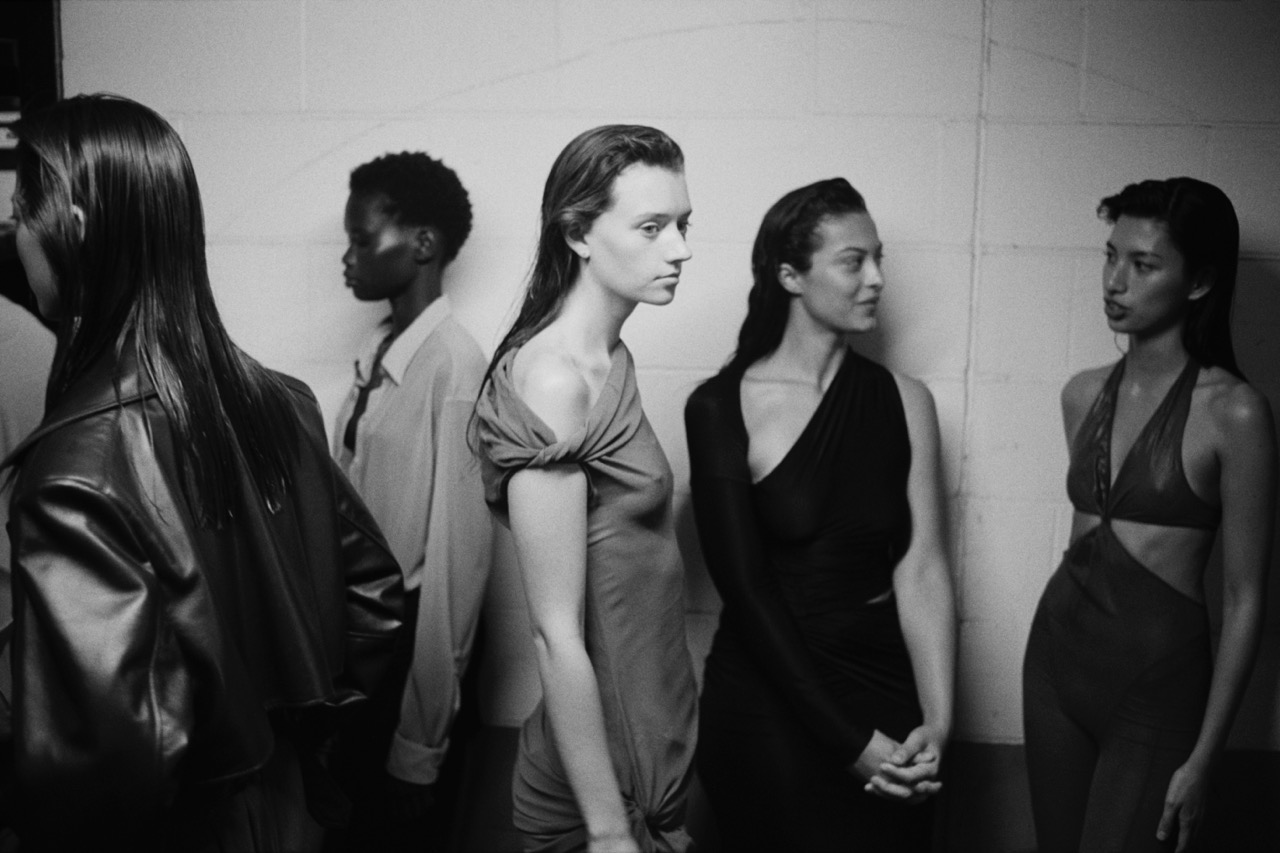
Supriya: What Donny said about being an outsider, about not being from London and being more ballsy as a result — I feel like we all have that in some way. You know, I’m not white. I’m a woman. I’ve always been ‘other’ in this country, my whole life. So I’ve never been afraid to just do things my way; I’ve always just been like, “oh, who fucking cares?” because I’m not the stereotypical English girl.
Parinaz: By doing the right thing, or ticking boxes, you just create a really homogenous environment for looking at and experiencing art, fashion or culture. It just feels like, what’s the point? Anything that you do, whether it’s putting on a show, making a collection, putting out a book… It has to add something, because we’re not curing cancer. Otherwise, trees have been killed and time has been wasted. You either do it really well or you don’t do it at all. And doing it really well doesn’t mean having a budget of millions. It’s just being intelligent and thoughtful and considered, and not repetitive. Otherwise, you’re part of this huge apparatus of mass consumption, adding to the machine that’s destroying the world.
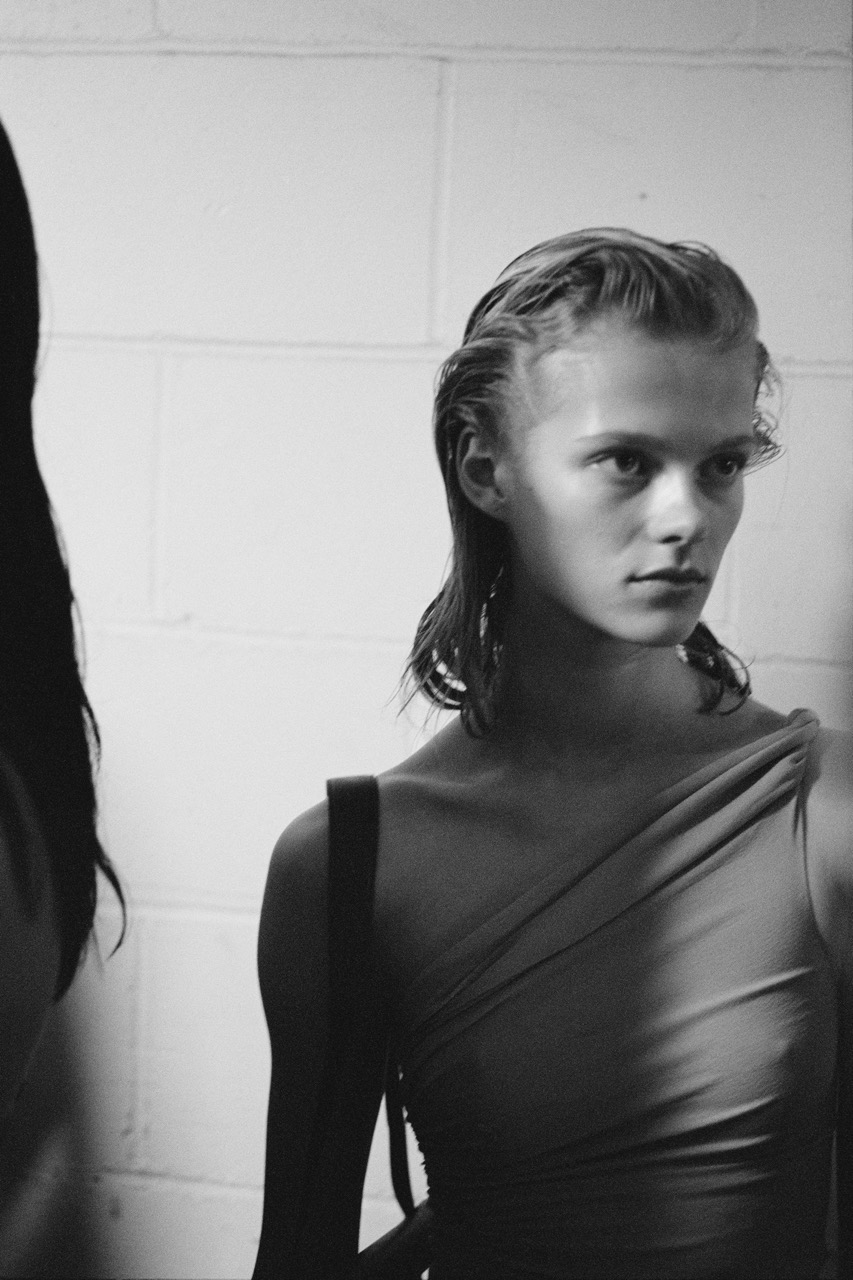
Donald: It’s also interesting to think about what it means for us to work with fashion and art. With the last show, a lot of people were like: “Supriya Lele is also doing art collaborations and now she’s in the art world” and that kind of thing, and it’s not the same thing at all.
Parinaz: It’s not this cut-and-paste attitude towards taking someone else’s ideas, because the way that some brands deal with their artist collaborations is just so vampiric. You approach an artist, you give them a little bit of money and then you take their intellectual property, plaster it on some T-shirt… and then you move on to the next season. I don’t understand why it continues. I know how much some of these artists have been offered and I think it’s appalling considering the budgets these brands have available, and for something that brings them so much cultural capital. This feels very conversation and idea-driven; it’s an exchange.

Donald: Everything is considered, we don’t rush. We react, but we don’t rush. It’s very much about asking: how does this make sense? What does it contribute?
Supriya: I was super, super hesitant to ever bring anyone into my business. No matter how small it is, it’s still mine and I’m very, very protective of it. But I just knew straight away this was the correct energy. It just all feels right. It’s given me so much strength, it’s given so much structure and support to my business and my artistic vision at the same time, which is really game changing for me.




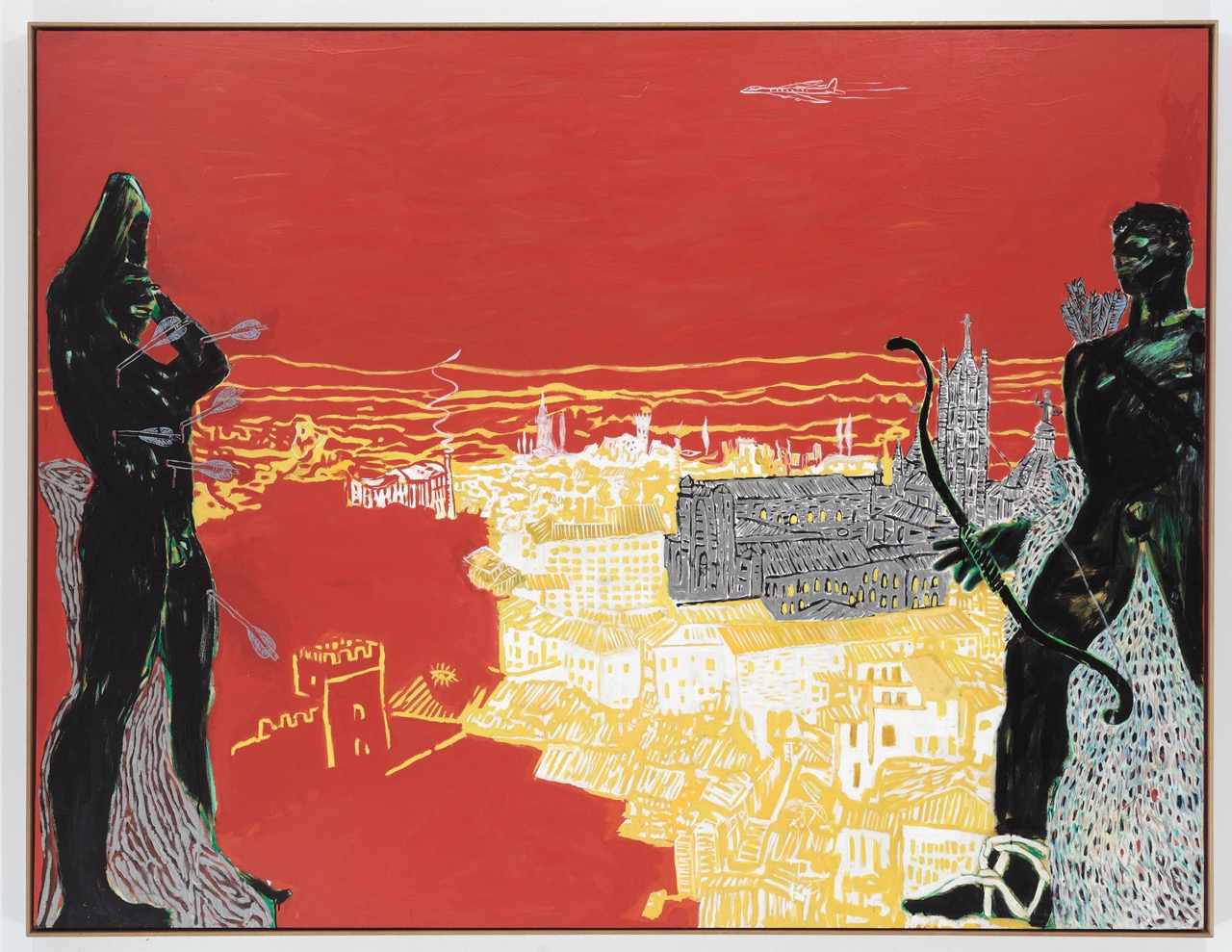
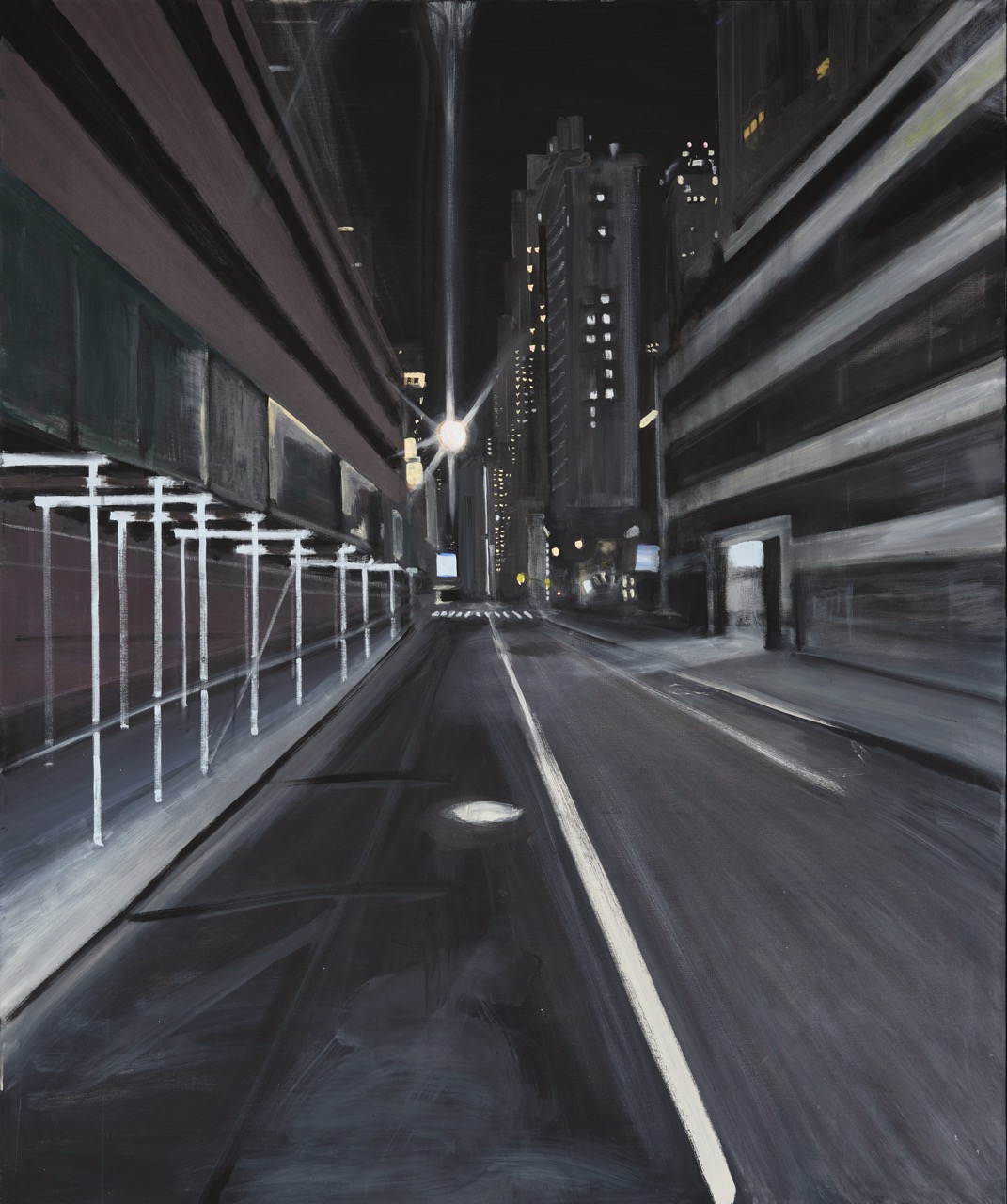

Credits
Photography Anders Edström
Fashion Jane How
Artworks are taken Man of the Crowd, TRAMPS × Qrystal Partners, featuring pieces by Edward Burra, Philip-Lorca diCorcia, Talia Chetrit, Peter Doig,
Deana Lawson, Satoshi Kojima, Richard Maxwell
